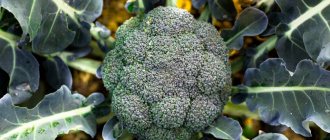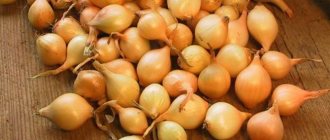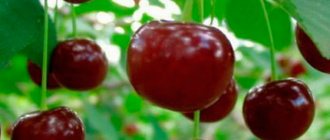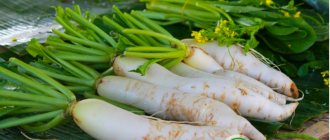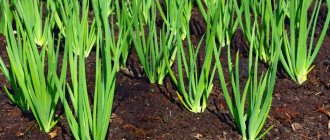Pumpkin is one of those crops that are traditionally grown by Russian vegetable growers. This late autumn vegetable can be seen in almost any garden plot. The genus Pumpkin includes several species, but four are cultivated. Butternut squash (another name for Egyptian) is one of them. It has differences from the common variety, which is more common in Russian areas. Find out what varieties of this vegetable are suitable for growing in summer cottages or garden plots and how to care for these plants.
What is butternut squash?
The plant belongs to the Pumpkin family. Many people claim that butternut squash has the best taste. The vegetable has juicy fibrous pulp. It is characterized by a light orange hue and a sweet taste. The top of the fruit is covered with a thin peel that can be easily peeled off with a knife. .
The shape of the plant can be different - round, ribbed, oval. Depending on the variety, the culture may have different shades. The plant is native to Mexico. Its fruits can be very large. The weight of each of them can reach 100 kilograms.
Harvest and storage
It is advisable to remove the fruits before the onset of cold weather. For many species, even a slight drop in temperature will cause irreparable harm.
Rules for picking fruits:
- Perform the procedure with pruning shears in dry weather;
- leave part of the stalk – 3-4 cm;
- Perform actions carefully so as not to damage the peel.
The harvest can be stored at room temperature, but the optimal temperature is 12˚C. Butternut squash is often placed in a dark place for 2 months. It is believed that it will become more tasty and aromatic, and the skin will become firmer with a clear pattern.
Beneficial features
Nutmeg pumpkin varieties have many beneficial properties. These include the following:
- the fruits have no cholesterol;
- the vegetable is low in calories;
- helps remove harmful elements from the body;
- has a diuretic effect;
- strengthens the immune system;
- improves the functioning of the organ of vision due to the content of carotene;
- normalizes the functions of the heart and blood vessels due to the presence of potassium.
Growing regions
Specific varieties of butternut squash have been bred for each area:
- For the Moscow region and the central zone, cold-resistant ones are suitable - Zhemchuzhina and Vita. It is possible to grow other varieties only by seedlings. For early ripening hybrids - Prikubanskaya, Rossiyanka, Butternut, Krasavitsa, Gileya, Augustine and Michurinskaya - greenhouse conditions must be organized during the first weeks after planting in the ground.
- For Siberia and the Urals, Rossiyanka and Michurinskaya are best suited. They have good resistance to cold and sudden temperature changes.
Popular varieties of butternut squash
This crop has many varieties. They differ in size, shape, purpose, composition.
Augustine
This is a high-yielding variety. Pumpkin ripens 105 days after planting. It has a cylindrical shape and a green tint. Pumpkin can be eaten fresh or cooked.
Arabatskaya
The plant has a medium-late ripening period. The fruits reach 8 kilograms. They are covered with a light orange peel. At the same time, the pulp is dense and juicy. Pumpkin can be stored for 4 months.
Peanut butter
This early ripening variety is the work of German breeders. The fruits are pear-shaped and reach 4 kilograms. The skin is creamy in color, and inside there is bright and juicy pulp.
Barbara F1
This is the highest yielding muscat variety. The plant is resistant to diseases. Pumpkin has a hard skin. She ripens quite early. The harvest will be harvested in 85 days.
Bylinka
It is a flat pumpkin with a gray skin. As it matures, it acquires a lighter shade. The culture is characterized by sweet orange pulp.
Vita
The culture is considered mid-season. The growing season is 115 days. The peel has a gray tint. The fruit weighs up to 4.5 kilograms. The pulp is considered quite juicy and has a pleasant aroma.
Vitamin
This is a fairly late variety. The fruits can be consumed after 140 days. They are distinguished by their elongated oval shape and thin skin. Inside there is orange pulp with a sweetish taste.
Guitar
The variety is considered mid-season. The harvest can be harvested after 110-120 days. The fruits are distinguished by their elongated shape and rich orange pulp. With proper care, a pumpkin can reach 8 kilograms.
Pearl
This variety belongs to the mid-late variety. It is distinguished by its orange peel and cylindrical shape. Inside there is juicy sweet orange pulp. The vegetative period is 110 days.
See also
How often should you water a pumpkin in open ground in August in hot weather?
Read
golden pear
This pumpkin is characterized by bright orange fruits. They are shaped like a drop. The plant matures within 95 days. Pumpkin is characterized by orange flesh with a chestnut flavor. It has small fruits weighing about 2 kilograms.
Spanish guitar
This fruit has an unusual shape that looks like a guitar. It can reach 1 meter in length. The weight of the pumpkin is 5-10 kilograms. This variety is characterized by yellow-green skin and orange flesh.
Marina from Chioggia
This variety is characterized by a flattened crust and a rounded shape. The variety is considered medium late. Its growing season is 130 days. The pumpkin reaches large sizes and can weigh 12 kilograms.
Honey Princess
This is a mid-season plant that matures 115 days after planting. The crop turns out to be quite powerful, so it is necessary to plant the bushes at a great distance. The fruits reach 4 kilograms.
Marble
This is a mid-season variety that ripens in 130 days. The fruits have a round and slightly flattened shape. The plant has marbled green and gray colors. Inside there is a sweet orange pulp.
Muscat de Provence
This is a medium-late variety that ripens in 120 days. It is characterized by a thick peel, which ensures a long shelf life. The fruits can reach 8-10 kilograms and contain rich orange pulp.
Muscat
This plant is characterized by beautiful orange fruits. They have an oblong shape and ripen in 140-150 days. The pulp is orange in color and contains many vitamins.
New
The culture has an average ripening period. The growing season lasts 115 days. The fruits are cylindrical in shape with slight thickening. The weight of the vegetable reaches 6-7 kilograms.
Nut butter (Butternut)
This variety is considered early ripening. Its growing season is 90 days. The fruits have an oblong shape. Their peculiarity is the formation of seeds in the lower part. This increases the volume of the pulp.
Palav Kadu
This variety is considered late ripening. Its growing season lasts 150 days. Therefore, the plant is propagated using seedlings. The fruits have a round shape and a ribbed surface.
Prikubanskaya
This plant produces pear-shaped fruits and is considered a mid-late bloomer. It takes 115 to 140 days to mature. The average fruit weight is 2.5 kilograms. They are characterized by thin skin.
Provençal
The fruits are characterized by a round, slightly flattened shape. Pumpkin has a thin, ribbed orange skin. The growing season is 120 days. The fruits reach 8 kilograms.
Trombone
This pumpkin has an original twisted shape and an impressive length. The pulp has a rich orange hue and good taste. Fruits can be stored for more than 1 year. It takes 110 days for them to mature.
Hokkaido
This variety is considered early ripening. It has different shapes - round, flattened, pear-shaped. The fruits weigh 0.7-2.5 kilograms. The flesh may be yellow or almost red.
Tsukatnaya
The vegetable has wide and slightly flattened fruits. The culture belongs to the mid-late varieties. The growing season reaches 140 days. The weight of the fruit is 5 kilograms.
Miracle Yudo
This unique vegetable can be eaten raw. It contains a lot of sugar and carotene. The pumpkin has an oval shape. In weight it reaches 6-8 kilograms. The peel has an orange tint and an interesting mesh pattern.
Reviews from gardeners
People who grow nutmeg pumpkin on their site advise planting the crop using seedlings. Planting the seed directly into open ground is possible if the region has warm and long summers.
Gardeners highlight many advantages::
- high productivity;
- early or medium ripening;
- rapid formation of buds;
- long fruiting period;
- high taste characteristics.
Housewives are pleased with the universal use of fruits. Some species are added raw to salads, and porridges, purees, and soups are also prepared. Consumed steamed and baked.
Muscat varieties contain large amounts of sugar and carotene. Not only the pulp is healthy, but also the seeds. They are often taken to prevent helminthiasis.
Features of growing nutmeg pumpkin
To get a strong plant, you need to take into account the main features of its cultivation.
Choice of time and place
It is recommended to plant pumpkin in an elevated and well-lit place. The plant needs spacious beds. It is best to grow the crop in seedlings. To do this, the seeds are planted in separate containers at the end of April. They are transferred to open ground in early June.
Preparation of planting material
To prepare the seeds, you need to do the following:
- soak for several hours in hot water;
- wrap in damp cloth;
- place in the refrigerator - on the bottom shelf.
Preparing the site for planting
The garden bed should be prepared in the fall. It is recommended to dig it well and add superphosphate and rotted manure. With the arrival of spring, these manipulations should be repeated. It is recommended to use ammonium nitrate.
Disembarkation process
Planting pumpkins in open ground should be done in late May or early June. It is important that the ground temperature reaches 12 degrees.
The distance between seedlings should be at least 0.6 meters. However, taking into account the variety, it may be more.
The depth of the hole should be 10 centimeters. Before planting pumpkins, it is recommended to water each of them. Then the plants can be planted.
See also
When to remove pumpkin from the garden for storage, timing of ripening in open ground and determination of ripeness
Read
Planting methods
Planting of nutmeg pumpkin is done mainly by seedlings, which is especially important in the cool conditions of the middle zone. If the plant is grown in a tropical, subtropical or subequatorial zone, then planting can be done directly in open ground. Each method should be considered separately.
Planting through seedlings
Experienced farmers prefer to grow pumpkin through seedlings, regardless of the temperature of the region. The first days are extremely important for the formation of taste qualities in future fruits, so it is extremely important to exclude possible exposure to negative weather conditions. In addition, when growing pumpkin through seedlings, you can speed up the process of obtaining fruits.
It is necessary to prepare seedlings according to the usual rules of agricultural technology 20 days before transplanting into open ground, that is, in April or May. You need to proceed as follows:
- Seed preparation . Soak the seeds for 3-4 hours in hot water (about 45°C), and then wrap them in a damp cloth and keep them at room temperature until they hatch (usually this will take 2-3 days). Such preparation will speed up seed germination and protect them from pests. When growing butternut squash, experienced gardeners also recommend hardening off the seeds to increase their cold resistance. So, already sprouted pumpkin seeds should be kept in the same damp cloth on the lower shelves of the refrigerator for 3-5 days. The seeds can be sprinkled with ash beforehand as a microfertilizer.
- Selection of capacity . Pumpkin seedlings do not tolerate transplantation well, so it is recommended to plant the seeds in separate peat pots measuring at least 6x6 cm. Some gardeners grow seedlings in homemade paper pots. They can be easily cut without harming the plant's root system. As a last resort, you can use ordinary wooden boxes.
- Substrate preparation . To prepare the soil mixture for seedlings, mix 2 parts of peat, 1 part each of rotted sawdust and humus. For 1 kg of substrate, add 1 tsp as fertilizer. nitrophoska. Mix the mixture thoroughly. It should be noted that the gardener can immediately purchase ready-made soil from the store - universal vegetable soil or the one recommended for cucumbers.
- Sowing seeds . Fill the pots with substrate, then water them generously and prepare small holes into which to throw the seeds. The optimal planting depth is 4-6 cm. If seedlings are grown in boxes, the bottom of the container should be sprinkled with sawdust in a 3-4 cm layer before filling with soil.
Containers with seedlings should be placed on a well-lit windowsill, preferably south-facing. In this case, you can grow strong seedlings without additional lighting. It is equally important to provide proper care for pumpkin seedlings, which consists of the following:
- Before seedlings appear, cover the surface of containers with seedlings with glass or film to create a greenhouse effect with a daytime temperature of +18...+25°C and a night temperature of +15...+18°C;
- after emergence of seedlings, which occurs approximately on the 6-7th day, reduce the daytime temperature to +15...+18°C and the night temperature to +12...+13°C, and after 5-7 days raise it again, but not so much intensely, as at first;
- regularly but moderately water the seedlings to prevent drying out or waterlogging;
- on the 7-10th day of emergence, add fertilizing - nitrophoska (15 g per 10 liters of water) or mullein solution (pour mullein with hot water in a ratio of 1:10, leave for 3-4 hours, dilute again in a ratio of 1:5 and water the young plants );
- a week before planting in open ground, carry out hardening - gradually reduce the daytime temperature to +15...+16°C and the night temperature to +13...+14°C.
Seedlings can be transplanted into open ground after 2-3 true bright green leaves appear. By this time, the seedlings will have grown to 15-20 cm. To cultivate them, you should choose areas where the following crops previously grew:
- potato;
- legumes;
- tomatoes;
- any types of cabbage;
- onion.
Pumpkin cannot be transplanted into soil in which its “relatives” like zucchini, cucumbers and melons previously grew. In addition, the area should be well illuminated by sunlight, dry and warm, and protected from winds.
The transplant itself is carried out according to the following rules:
- Starting in the fall, dig up the beds and fertilize them by 1 square meter. m add 3-5 kg of humus, 200 g of lime and 30-40 g of complex mineral fertilizers.
- At the end of May - beginning of June, when the earth warms up to at least +18°C, in cloudy weather or in the evening prepare holes, the depth of which is at least 5 cm. The distance between them should be within 60-100 cm.
- If the seedlings were grown in peat cups, carefully destroy their dense outer walls. If the seeds were sown in boxes, the resulting seedlings should be taken out with a clod of earth so as not to harm the delicate roots.
- Plant young plants in prepared holes and water generously.
- Cover the seedlings with film to protect them from frost. When the temperature returns to normal, the shelter can be removed and subsequently used only during cold nights.
A properly planted pumpkin produces large and heavy fruits, and 2-3 ovaries ripen on each plant.
Sowing in open ground
In warm southern regions, seeds can be sown directly in open ground. This should be done in the first ten days of May under film cover. The optimal temperature for growing crops is within +20…+25°C.
Planting must be done on a well-lit area of land that is protected from shade and winds. It should be taken into account that if the soil is rich in groundwater, then it is not suitable for growing melons, since its root system goes deep underground and can simply die from excess moisture.
The seeds prepared in the previously described way need to be sown along the bed to a depth of 5-6 cm and at a distance of 80-90 cm. You should throw 2 seeds into each hole, and when the shoots appear, you will need to remove the weaker plant by the roots.
How to properly care for the crop?
In order for the pumpkin to develop well, it needs to be provided with high-quality and complete care.
Watering rules and necessary fertilizers
Before the ovaries form, the pumpkin must be watered once a week. Then they switch to another regimen - once every 1-2 weeks. The water should be warm and settled.
There is a risk of spreading disease when using cold liquid. It is better to avoid watering a couple of weeks before harvesting.
Weeding and loosening the soil
It is recommended to loosen the soil after each watering. Between the rows this should be done to a greater depth, near plants - to a shallower one. Timely removal of weeds is of no small importance. This is especially important before the pumpkin begins to actively develop.
Pollination
In bad weather there are usually no insects to pollinate plants. In such a situation, the procedure is carried out on its own. It is recommended to do this in the morning in cool weather. To do this, you need to take a male flower, remove the leaves and touch the stigma of the female flower with the stamen. You can transfer pollen with a soft brush.
Formation of lashes
Pumpkin forms a large number of ovaries, but is not able to guarantee them adequate nutrition. To get a good harvest, it is enough to leave 2-3 fruits. The formation process also implies compliance with the following rules:
- the stems need to be pinched - this is done 0.5 meters from the ovary;
- get rid of excess shoots;
- straighten the lashes, sprinkle them with soil.
This manipulation will help the plant form new roots. Due to this, it will receive additional nutrition.
Pumpkin care
Pumpkin does not need careful and specialized care, but there are some measures that should not be neglected if you want to get a large harvest of large fruits.
Pumpkin, flower
Watering
The main maintenance measure is adjusting watering. The pumpkin, like a pump, pumps out all the moisture from the ground and then evaporates it through the leaves. Thus, little gets to the roots and stems. Therefore, the moisture level in the soil must constantly be replenished.
After watering, every other time you need to loosen the soil near the base of the stem. Weed out weeds as they grow.
If the summer turns out to be dry, then before flowering the pumpkin can be watered more often.
Top dressing
You need to feed the pumpkin often, otherwise you won’t be able to get large fruits. The first fertilizing in open ground is after the formation of the fifth leaf. The second is when lashes begin to form. Then every two weeks.
You can feed with nitrophoska, starting with 10 g per plant and increasing the dose by 5 g with each feeding. You can add dry granules or prepare a solution.
During the fruiting period, a glass of ash is added to each feeding.
You can feed the pumpkin throughout the growing season with mullein solution.
How to shape a pumpkin
How to shape a pumpkin
The plant is formed into one stem, or at least two - this promotes high yield. To do this, after excess shoots appear on the sides, they are all removed, and excess ovaries are also plucked out, leaving no more than three on each lash.
Powder
Another agrotechnical technique that promotes yield is sprinkling with vines. Once the lashes have reached a meter in length, they must be carefully untangled, laid in a given direction and sprinkled with earth in two or three places. This is done so that the wind does not break the vines and leaves, tearing off the ovary. But the main thing is that in the internodes pressed to the ground, additional roots are formed that will nourish the plants and contribute to the increase in fruits.
Vegetable garden care
A few more tricks
- Whips that have climbed onto a fence or roof must be controlled. When the pumpkins begin to ripen, secure them by placing them in regular string bag nets and securing them with additional fasteners. Otherwise, heavy fruits will roll down, breaking off the stems.
- It is undesirable, especially in wet weather, for the fruits to lie on bare ground. When they reach medium size, place planks or other “breathable” material under them.
Pumpkin Pest Control
Diseases, pests and methods of protection against them
Pumpkin may face dangerous diseases and attacks from harmful insects. In such a situation, appropriate measures must be taken immediately.
Diseases
Pumpkin rarely encounters diseases because it has excellent immunity. However, sometimes diseases still develop.
Bacteriosis
When infected, dark green spots appear on the leaves. On the reverse side you can see an oily substance. After some time, the leaves dry out. The disease also leads to deformation of the fruit. Copper sulfate and Bordeaux mixture help to cope with bacteriosis.
Powdery mildew
In this case, the leaves become covered with white spots. Over time, a white coating appears on them. The disease leads to deformation of the fruit and drying out of the crop. Sodium phosphate and colloidal sulfur help to cope with the disease.
Root rot
First, the root system suffers. It turns brown and cracks. Then the leaves turn yellow and the pumpkin stops developing. The drugs Fundazol and Previkur are used for treatment. You can also sprinkle the plant with wood ash.
Anthracnose
As the disease develops, the leaves become covered with brown spots. After some time they crumble and holes appear. As a result, the foliage dries out. Bordeaux mixture helps to cope with the disease. Copper oxychloride can also be used.
Yellow mosaic
In this case, the leaves become covered with small yellow spots. The plant is stunted in growth. Farmayod-3 helps to cope with the problem.
Pests
Sometimes the pumpkin faces attacks from pests. It is important to identify and neutralize them in time.
Spider mite
This parasite sucks all the juices out of the crop. Mites can be seen on the underside of leaves. Karbofos will help you cope with it.
melon aphid
Colonies of pests infect the lower part of the leaves and feed on their sap. As a result, the culture dries out. Karbofos helps to cope with the problem.
Slugs
These pests eat young shoots. To combat them, ash and garlic infusion are used. The drug Groza is also suitable.
Wireworm
The pest is dangerous for the roots of young plants. It is recommended to collect it mechanically using bait. In difficult cases, Bazudin is used.
Description of culture
Pumpkin belongs to the Cucurbitaceae family and is grown primarily as a vegetable or ornamental plant. Pumpkin crops are short-lived annual vines with branching tendrils and broad-lobed leaves.
The plant produces large yellow or orange flowers and fruit that can vary in size, from miniature pumpkins weighing no more than 1 kg to giant pumpkins weighing over 34 kg. The skin of the pumpkin is usually ribbed and often orange in color, although some varieties are green, grey, yellow or red.
Butternut pumpkin got its name due to the delicate aromatic smell of the pulp, thereby outperforming other types of pumpkins in taste.
The culture is characterized by a variety of varieties, shapes and colors. The oval, round or curved fruits, as seen in photographs, are covered in skins of all shades, from bright yellow to deep orange and brown. Compared to the usual round pumpkin, the nutmeg pumpkin has a small number of seeds in relation to the pulp.
A distinctive property of nutmeg pumpkin is its long-term storage without loss of taste. The longer the vegetable sits, the more pronounced its nutmeg flavor becomes. The ease of care allows novice gardeners to grow crops.
Ripening period
Depending on the varietal variety, the onset of fruiting also varies. Breeders have developed varieties from early ripening to late frost-resistant. The earliest harvest can be obtained 110-115 days after the appearance of seedlings. The collection of such fruits begins 3.5 months after planting. But early ripening varieties are not intended for long-term storage due to their thin skin.
Mid-season varieties ripen in 110-120 days. Harvesting should be completed before frost sets in. Late-ripening varieties ripen no earlier than after 200 days. In this case, you have to harvest an unripe pumpkin, but its pulp will gain flavor and aroma during storage.
Drought resistance, frost resistance
Butternut squash tolerates short dry periods well. However, a long absence of watering leads to drying out of the plant and lack of harvest. Through the efforts of breeders, varieties were developed that are capable of growing and gaining weight under risky farming conditions.
Frost-resistant crops are adapted to the conditions of the Siberian and Ural territories. However, to obtain maximum yield, they should be planted in greenhouse conditions.
Productivity
Depending on the variety, you can get a harvest of small pumpkins weighing no more than 2 kg, or record holders weighing 8-11 kg. In addition to varietal differences, the abundance of the harvest is influenced by proper care. Regular watering, loosening and fertilizing the soil - all this affects the yield.
On average, subject to agricultural technology, from 1 sq. m of planting, you can get 6 kg of pumpkin, for example, the Muscat de Provence variety. The yield of the Big Helmet variety reaches 20 kg per 1 sq. m.
For the Moscow region and central Russia
Pearl
The growing season lasts 100-110 days , one hundred corresponds to the average ripening period. The bush is compact in size with a large number of ovaries, from which pumpkins weighing 7.5 kg .
A small seed nest is located in the upper part of the elongated fruit, the rest is orange with a red tint.
It is planted by seed and seedlings with an interval between bushes of at least 60 cm. The crop is responsive to organic fertilizers and is characterized by cold resistance.
Pearl
golden pear
Golden pear - with an early ripening period of 95 days . About 3 fruits are formed on each lash, the weight of which reaches 1.8-2 kg .
The taste has a chestnut note. Harvesting begins in August; up to 10 kg of vegetables are harvested from 1 m2.
The culture is responsive to fertile soil and organic fertilizers.
golden pear
Vita
Mid-season crop with a ripening period of 115-125 days . The plant forms a powerful whip, the weight of the fruit reaches 3-4 kg .
Strong immunity manifests itself in resistance to diseases and cold climates.
Vita
Shortened interception
A mid-season variety with a growing season of 110-125 days , it is perfect for growing in open ground at a summer cottage in the Moscow region or central Russia. Elongated fruits weighing up to 3 kg .
The peculiarity of pumpkin is its unique taste, sweetness and delicate structure of the pulp.
Shortened interception
Preparing soil and seeds for planting
Before you start planting nutmeg pumpkin seeds, the soil intended for this purpose must be treated in a special way. To do this, you will need to loosen the soil, freed from pest plants, even when cold weather sets in, to ensure access to air. At the next stage, it is necessary to mix fertile and fertilized soil to create wide and high stripes - beds. Only then start sowing seedlings.
Seeds must be prepared for sowing. First you need to check their viability. Larger and convex seeds provide a higher percentage of germination. They need to be placed on a small piece of linen lying on a wet saucer - a scarf or other textile product can act as it. Then leave to germinate, periodically wetting the fabric. After the seed begins to sprout, you can plant it in the ground.
For growing in summer cottages in Siberia and the Urals
Russian
The growing season of the Russian woman lasts 90-100 days , the fruits are characterized by juicy sweet pulp and melon aroma. More than 20 kg of crop is harvested from 1 m2 with a vegetable weight of 1.9-4 kg .
The plant is medium-climbing; when planting, an interval of about 60 cm is maintained between the bushes. For 5-6 months, the pumpkin retains its taste and commercial qualities in a dry and ventilated room. The pulp is used universally.
Russian
Smile
Cold-resistant early-ripening plant with a ripening period of 85-90 days . The Smile culture is a bush plant, forms up to 6 small shoots, on which 8-10 pumpkins weighing 0.8-1.2 kg .
The bright orange flesh is crisp but not juicy. The vegetable is incredibly popular among chefs due to its sweetish taste and melon aroma. The harvested crop retains its flesh quality until March. Planting is carried out according to the scheme: 60x60 cm.
Smile
Michurinskaya
Table variety, suitable for fresh and processed consumption. The growing season lasts 96-105 days . The weight of the average fetus is about 5 kg .
The seed nest is small, which indicates a thick layer of pulp.
The plant tolerates unfavorable weather conditions (drought, cold, heavy rainfall); even frosts down to -5 degrees are not scary.
Medical
Early ripening periods of up to 105 days and strong immunity allow the crop to be grown in the conditions of Siberia and the Urals. The plant is medium-climbing; when planting, the following pattern is used: 60x70 cm.
Pumpkin weight reaches 3-5 kg . Main taste characteristics: juicy, sweetish with a pleasant honey aroma.
Medical
How to grow
Pumpkin is a heat-loving crop. Caring for it is simple, although it has some peculiarities. Let's consider what should be done to obtain a tasty and beautiful harvest.
Site selection
Land with a deep arable layer and loose soil is ideal for muscat varieties. Many gardeners grow them in compost because it is warm and nutritious. If there is no compost heap, then prepare the beds.
To do this, find a warm and sunny place. First, the bed is dug up in the fall and all the garbage is burned. With the arrival of spring, the earth is dug up again and disinfected. A solution of copper sulfate is suitable for this. The liquid will destroy dangerous microbes and pathogens.
Farmers are also advised to apply organic fertilizers. Before planting, an excellent option would be to fertilize the soil with an ash-based infusion. It will make the soil more nutritious and beneficial for pumpkin, which will have a positive effect on the quality of the harvest.
Seed preparation
When choosing seeds, pay attention to the integrity and appearance of the packaging. We recommend buying them in specialized stores. After purchasing, inspect the seeds and check for germination. Pour them into a container of water and stir in a circular motion. Leave for 10 minutes.
Any seeds that remain on the surface should be discarded because they are empty. Remove those specimens that have sunk to the bottom and dry thoroughly. They are suitable for sowing.
It is better to disinfect even purchased material. An excellent remedy is boric acid. It is enough to soak the seeds in a solution at the rate of 0.2 g per 1 liter of water for two hours. The solution protects pumpkin from fungal infections and increases yield.
Important! Don't forget about germinating seeds. To do this, place them on a damp cotton pad and place them in a warm place. Farmers are advised to use growth stimulants: for example, succinic acid protects against diseases, and sodium humate accelerates growth.
Care and feeding
Water the pumpkin moderately, with no more than 2.5 liters of water per bush. The optimal temperature for watering is about 18-22 degrees. It is best to moisten the beds in the early morning or evening to avoid sunburn.
In humid and foggy summers, reduce the amount of water so as not to overwater the plant. Sometimes liquid root fertilizers, such as a solution of nettle or ash, are added to watering.
The beds are loosened every week, it is best to do this before watering. Loosening removes the hard top crust of the earth: it impedes the access of nutrients. Along with loosening, weeds are removed that slow down the development of bushes.
Pumpkin reacts positively to mineral complex fertilizers and organic substances. The most popular among gardeners are:
- "Nutriflex S" - contains magnesium, zinc and calcium, without which normal development of vegetables is impossible.
- “Zircon” - increases yield by 10-15% and improves the plant’s immunity to diseases and insect pests.
- “Mycephyte” - strengthens the root system, making it more developed.
- Chicken manure contains nitrogen, potassium and phosphorus, which strengthen the stems and leaves.
- Ash solution - reduces the acidity of the soil and allows the plant to more easily tolerate climate change. It is especially useful for growing and caring for nutmeg pumpkin in open ground.
Formation of lashes
How to shape butternut squash? The lashes are formed in mid-August to speed up the ripening of vegetables. They always reach for the sun, so they grow in a southerly direction. On long vines, 4-5 pumpkins are formed at once, which do not have time to ripen in time.
Select the largest vegetables and tear off the remaining ovary. Afterwards, pinch each lash. With the help of formation, the growth of the bush stops, and all the nutrition is spent on ripening the pumpkin.
Important! As soon as the length of one lash becomes more than 1 m, it should be straightened and placed on the bed, sprinkled with earth on top. This is necessary so that long lashes do not injure the leaves and stems.


